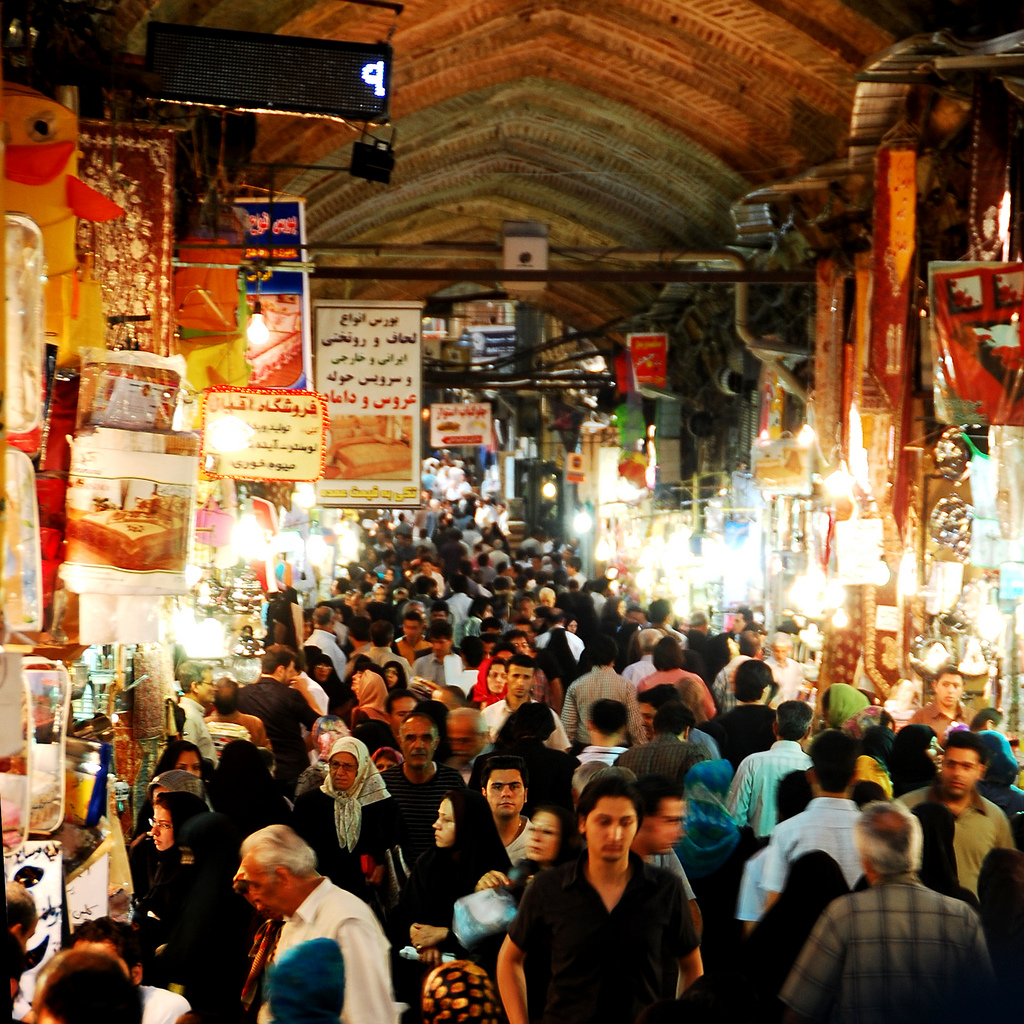Going shopping in Iran is a singular experience. Depending on what you are looking for, there will be a multitude of places to go and many chances to compare prices in a highly competitive retail market.
Every residential area in each city and town is mixed in with shops for at least everyday needs and usually more. In shopping, convenience is important to Iranians, but many go to extra lengths to get precisely what they’re after, forgoing the one-stop shop.
If you need something specific, there are multiplexes full of arcades specializing in a particular commodity. Areas of each city are known to be “the place” for computer parts and mobiles, ladies’ and men’s fashion, household goods and furniture, or children’s accessories.
If it’s fashion and a particular brand you’re after, there are boutique-lined streets such as Jordan in Tehran or Chaharbagh Bala Street in Isfahan as well as western-style malls uptown.
However, these are as much for the “scene” as the actual shopping, wrote William B Jenkins, an associate and Iran specialist for Dearin & Associates, for the Sydney-based international business consultancy.
Iran is a dream market for retail: a country of 80 million, with a large number of young, educated, hip urbanites. With 73% of the population in urban centers and 60% under 30, it provides a broad and accessible consumer base.
Even more than this, Iran is a middle income country with an average income of $17,000 per head. Iranian consumers exercise more purchasing power than consumers in comparable localities of India, Brazil, Egypt and China.
How Iran’s Retail Works
There is a developed luxury and upper-end of the market in Iran. Various European luxury operators have an established presence in Iran and there is a palpable concern for status among most sections of the Iranian consumer market.
Despite this, the Iranian middle class is large and growing. This is where the most of the best opportunities lie. Furthermore, it is a market beginning to thrive on technology-driven retail. While many stores don’t have a virtual presence, there is a prospering, though still small, e-commerce sector.
With the largest number of smartphone and Internet users in the Middle East, its e-commerce is growing faster than any other in the region. Using an old Iranian delivery method, shoppers can order online and expect delivery within hours by speedy motorcycle delivery man—the peyk—for a cost not more than postage.
Transactions are easily done within the domestic bank card system, but not with international cards that are set to come online in the near future.
Traditional but Slowly Changing
Despite extensive opportunities for hopeful retailers in Iran, there are several crucial unique factors to bear in mind when looking at Iran. Firstly, it is a quickly evolving market in retail, but the traditional approach still dominates distribution and sales.
Unlike other countries in the region and around the world, Iran’s traditional market has not turned into a tourist attraction. Instead, the Iranian bazaar is still the beating heart of the economy, politics, society and, of course, shopping, in every city.
While each city has a grand bazaar that is this heart, bigger cities like Tehran, Isfahan, Mashhad and Shiraz have multiple traditional bazaars in various parts of the city that receive most patronage. These are the backbone of distribution networks linking back to the grand bazaar—even for many modern retail establishments.
Many Iranians still prefer to conduct their shopping in the bazaar and independent small retailers, though local convenience stores, boutiques and malls are becoming more common.
Marketing, Finances and Distribution
This will remain a hallmark of the Iranian retail market: it is at early stages of modernization. It will incorporate some modern western approaches, but will keep and mix these with more traditional retail and distribution arrangements. This means the peyk will remain, small shops and the bazaar will continue to be important and attract a great consumer base where malls and large shopping centers will not dominate any time soon, despite steady growth.
Depending on the retailer, a clear mode of entry keeping an eye on competition should be designed for the target market segment.
One of the obstacles for foreign retailers looking to Iran has been financial. The removal of sanctions and Iran’s reconnection to international financial systems, particularly SWIFT, will erase this problem for all but American companies (due to longer-term sanctions on direct business with Iran).
Retail property is abundantly available for all market segments. Small shops proliferate and the retail market is fragmented.
Larger shops often have government backing or part ownership, particularly at the municipal level, which again means due diligence and extensive market research are an absolute must.
Iran is forward-looking, but it still has the old-world charm of not being saturated in marketing and advertisement at every turn. Thus, retailers will need to determine a thought-out strategy for their marketing to reach potential consumers that takes into account cultural sensibilities as much as market realities and regulations.
While Iran is not entirely buttoned up, there are strict rules and cultural norms around advertising, particularly fashion. Most consumers have conservative sensibilities and aggressive western-style marketing campaigns will not get the same reaction as at home or in comparable markets like Brazil or India.
Instead, concerted marketing with reputation-building rather than braggadocio will win the Iranian consumer from the vast field of competition.


